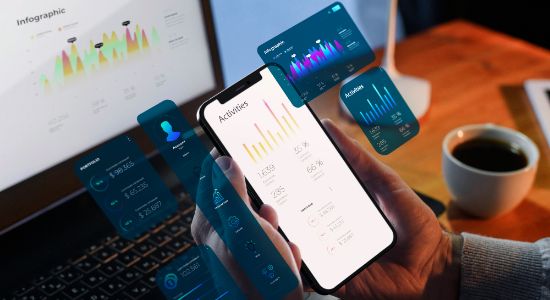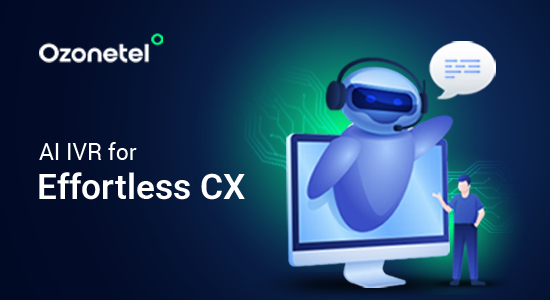- Resources
- Elevating Customer Experience through Call Center Quality Assurance
Elevating Customer Experience through Call Center Quality Assurance

Ever felt the frustration of a customer service call gone wrong? You’re not alone. Poor call center experiences can turn loyal customers into ex-customers faster than you can say “please hold.” But here’s the good news – Call Center Quality Assurance (QA) can eliminate this problem from your call center.
Call Center QA allows you to consistently deliver top-notch customer service. It’s not just about monitoring calls; it’s a comprehensive approach to evaluating, improving, and maintaining the quality of every customer interaction. Think of it as your call center’s personal trainer, constantly pushing you to be better, faster, and more efficient.
In its simplest form, Call Center QA is a systematic process of call quality monitoring, analyzing, and improving the performance of your call center agents. It involves setting standards, evaluating interactions, providing feedback, and implementing improvements across all customer touchpoints.
In this article, we’ll dive deeper into the meaning of Call Center QA, why it’s important for your business, and the best practices that can take your customer service from good to great. Read along!
Customer Lifetime Value Meaning
Customer Lifetime Value (CLV) measures the total profit your company can expect to generate from an average customer throughout their entire relationship with you.
Looking for the best AI call center software? You’re in the right place. It’s no secret that AI is changing how businesses talk to their customers. But with so many options out there, finding the right one can be tricky.
Don’t worry, though – we’ve got you covered. In this article, we’ll break down the top AI call center tools. Whether you’re running a small business or managing a big customer service team, we’ll help you find software that makes your life easier and your customers happier. Let’s get started!
What is Call Quality Assurance in a Call Center?
Call Quality Assurance in a call center is your key to delivering top-notch customer service consistently – it’s a systematic process where you monitor and evaluate your agents’ interactions with customers, ensuring they meet your company’s standards.
You’ll assess various aspects, from how quickly calls are answered to the professionalism and problem-solving skills of your team. This isn’t just about ticking boxes; it’s about understanding what makes a great customer experience and helping your agents achieve it every time.
By implementing Call Quality Assurance, you’re not only improving individual calls but also uncovering valuable insights about your entire operation. You’ll spot trends, identify common issues, and find opportunities to streamline your processes. This data-driven approach helps you make informed decisions about training, staffing, and even your overall customer service strategy.
Importance of Call Quality Assurance in Call Center
By systematically monitoring and improving your customer interactions, you’re not only enhancing the customer experience but also safeguarding your revenue and reputation.
Let’s dive into why Call Quality Assurance should be at the top of your priority list:
Protect Your Bottom Line
With 9.5% of your business income at risk due to poor experiences, you can’t afford to overlook quality assurance. By implementing a robust QA program, you’re actively working to retain customers and protect your profits. Remember, satisfied customers are 3.5 times more likely to make repeat purchases, turning your call center into a powerful revenue driver.
Enhance Customer Loyalty
A staggering 96% of customers will leave if they receive poor service. So how do you ensure that this doesn’t happen in your organization? By focusing on call quality, you’re not just handling queries—you’re building relationships. Each interaction becomes an opportunity to impress your customers and keep them coming back. Through consistent, high-quality service, you’ll reduce churn and cultivate a loyal customer base that’s more likely to recommend your business to others.
Boost Agent Performance
Your agents are the voice of your company, and their performance can make or break customer interactions. Quality assurance helps you identify your top performers, pinpoint areas for improvement, and provide targeted training.
By implementing gamification (using game-like elements to motivate employees) and incentives, you’ll not only improve service efficiency but also boost agent satisfaction. This leads to reduced turnover, lower costs, and higher service levels—a win-win for your team and your customers.
Continuous Improvement
Quality assurance isn’t a one-time effort—it’s an ongoing process of refinement and improvement. By regularly monitoring calls, you’ll spot trends, identify common issues, and uncover opportunities to streamline your processes.
This data-driven approach allows you to make informed decisions about training, staffing, and overall customer service strategy. You’re not just solving today’s problems; you’re anticipating and preventing tomorrow’s challenges.
Actionable Insights
By combining call recordings with quantitative data on handling times and customer satisfaction, you gain a comprehensive view of your call center’s performance. These insights allow you to provide detailed, targeted feedback to your team and set specific, measurable goals for improvement. Whether it’s reducing handling times or improving first-call resolution rates, you’ll have the data you need to drive meaningful change.
15 Ways to Improve Call Center Quality Assurance
Call center quality assurance can appear difficult due to the sheer volume of calls to be evaluated, but it is important to discover areas for improvement, particularly among call center customer service agents. Here are some pointers to help you develop a call center QA process, successfully complete QA duties, and enhance call center quality:
Define Call Center Metrics
Start by establishing specific, measurable quality metrics that align with your support goals. These could include response time, average handle time (how long it takes to resolve a customer issue), first call resolution (solving the problem on the first contact), and customer satisfaction scores.
For instance, you might set a target of resolving 80% of customer issues on the first call, or maintaining an average customer satisfaction score of 4.5 out of 5. By setting clear benchmarks, you give your team concrete goals to strive for and a way to measure their progress.
Evaluate a Large Sample Size
When determining your sample size, consider the volume and variety of interactions your center handles. For high-volume centers, you might aim to evaluate 5-7 interactions per agent per week. For smaller operations, you might review a higher percentage to ensure accuracy.
Also, diversify your sample across different types of interactions—sales calls, technical support, customer complaints—to get a comprehensive view of performance. This balanced approach ensures you’re not missing crucial insights in any area of your operation.
Customer Journey Mapping
Understanding your customers’ experience from first contact to resolution is crucial. For this, create a visual representation of this journey, identifying all touchpoints and potential pain points. Customer journey mapping will help you pinpoint where quality assurance efforts are most needed.
For example, you might discover that customers often struggle with your phone menu system before reaching an agent. Armed with this insight, you can focus on improving that specific part of the journey.
Real Time Call Monitoring
Real-time monitoring isn’t just about catching mistakes—it’s about providing immediate support and recognizing excellence in the moment. For instance, if you notice an agent struggling with a particularly difficult customer on a call, you can provide immediate support or guidance.
So, implement a system where supervisors can discreetly message agents during calls to offer guidance or praise. You can also use speech analytics software to flag calls that might need intervention, such as those with escalating emotions or mentions of cancellation.
This proactive approach allows you to turn potentially negative experiences into positive ones in real-time.
Automate Quality Management Workflows
Leverage AI-powered tools to streamline your quality assurance process. These tools can automatically score agent interactions based on predetermined criteria, saving time and reducing human error. They can evaluate both hard skills (like efficiency and accuracy) and soft skills (such as empathy and patience).
Use these insights to create targeted training programs and improvement plans for your team. For instance, if the AI consistently flags an agent for long silences during calls, you can provide targeted training on efficient information lookup or conversation management techniques.
Reward Good Quality Assurance Initiatives
By recognizing and celebrating excellence, you create a culture where high standards are not just expected, but enthusiastically pursued. Let’s explore how you can develop a comprehensive reward system that drives continuous improvement and boosts morale.
Start by creating a multi-tiered recognition program that acknowledges different levels of achievement. This could include daily shout-outs for small wins, monthly awards for consistent performance, and quarterly or annual bonuses for outstanding contributions to quality improvement.
Additionally, implement a point-based system that aligns with your quality criteria. Assign point values to different aspects of performance, giving more weight to critical areas. For example:
- 10 points for maintaining 100% adherence to compliance guidelines
- 15 points for successfully de-escalating a challenging customer interaction
- 20 points for receiving a perfect score on a quality assessment
- 25 points for implementing a process improvement that enhances overall quality
Agents can accumulate these points over time, with different reward tiers based on total points earned. This gamification approach not only motivates agents but also helps them understand which behaviors and outcomes are most valued.
Document QA Criteria
When documenting your QA criteria, go beyond a simple checklist. Create a comprehensive guide that includes examples of what good (and poor) performance looks like for each criterion. Use real call transcripts or recordings (with sensitive information removed) to illustrate your points.
Now, make this guide a living document—encourage agents and supervisors to suggest updates based on their experiences. Regularly review and refine your criteria to ensure they stay aligned with your evolving business goals and customer expectations.
Agent Training
Integrating quality assurance into your new agent onboarding process is crucial for setting expectations from day one.
So, create a comprehensive module that covers all aspects of your QA program, including metrics, evaluation criteria, and the feedback process. Having your lead QA person deliver this training creates a personal connection and allows new agents to ask questions directly. Incorporating mentoring software can further provide expert support, personalized feedback, and skill development, helping new agents build confidence and improve performance over time.”
You can also consider including role-playing exercises where new agents practice evaluating calls using your QA criteria. This hands-on approach helps them internalize quality standards and understand how their performance will be assessed.
Integrate Omnichannel Insights
Implement a system that aggregates customer data from all touchpoints—phone, email, chat, social media, and even in-store interactions if applicable. This 360-degree customer view allows agents to provide more personalized and efficient service. For example, if a customer calls after several unsuccessful attempts to resolve an issue via email, the agent can immediately acknowledge this history and offer a more targeted solution.
Consider implementing ‘channel pivoting’ where agents can seamlessly switch between channels during a single interaction if needed. This flexibility can significantly enhance customer satisfaction and resolution rates. Additionally, use omnichannel data to identify trends and pain points across different channels, informing your overall customer service strategy.
Feedback
Effective feedback is a skill that requires cultivation – develop a ‘coach the coaches’ program that trains your QA specialists and supervisors in the art of constructive feedback. This program should cover topics like active listening, framing feedback positively, and setting actionable improvement goals.
Moreover, encourage a feedback culture where agents regularly seek input on their performance, not just during formal evaluations. You can also consider implementing a peer feedback system as well, where agents can learn from and support each other’s growth.
Cause Analysis
A structured Root Cause Analysis (RCA) process that goes beyond surface-level problem-solving. Instead of merely addressing symptoms, RCA helps you uncover and tackle the underlying issues that lead to recurring problems.
Now, how can you implement this in your organization? For starters, when a critical issue arises, don’t limit the investigation to your call center team. Bring together people from various departments – customer service, IT, product development, and even marketing. This diverse group will bring different perspectives and expertise to the table, helping you see the problem from all angles.
For instance, if you’re experiencing a spike in calls about a particular product feature, include someone from the product team in your RCA session. They might provide insights about recent changes or known issues that could be contributing to the problem.
Plus, use techniques like the ‘5 Whys’ strategy. What does this mean? Suppose, you’re getting a high volume of password reset calls. According to the ‘5 Whys’ strategy, ask the following question:
- 1. Why are customers calling for password resets? They can’t log in.
- 2. Why can’t they log in? They’ve forgotten their passwords.
- 3. Why have they forgotten their passwords? They haven’t used the service in a while.
- 4. Why haven’t they used the service? They didn’t find it valuable after initial sign-up.
- 5. Why didn’t they find it valuable? The onboarding process didn’t effectively demonstrate the service’s benefits.
Once identified, create action plans to address these causes and prevent recurrence. Also, regularly review the effectiveness of these actions to ensure long-term resolution. Now, share the insights gained from RCAs across the organization to promote learning and prevent similar issues in other areas.
Another useful tool is the fishbone (or Ishikawa) diagram. This visual representation helps you categorize potential causes of a problem. Categories might include – people, process, technology, and environment. For each category, brainstorm possible contributing factors to your issue.
Compliance
Integrate compliance checks into your regular QA process, ensuring that every interaction adheres to relevant regulations and company policies. Also, develop a comprehensive compliance checklist that covers industry-specific regulations (like GDPR for data protection or HIPAA for healthcare), as well as internal policies.
Don’t forget to regularly update this checklist to reflect changes in the regulatory landscape.
For Service Level Agreement (SLA) compliance, set up real-time monitoring systems that alert supervisors when SLAs are at risk of being breached. This proactive approach allows for immediate intervention to prevent escalations.
To go one step further, consider implementing a tiered escalation process for SLA breaches, ensuring that critical issues receive appropriate attention and resources.
Team Work
Quality circle discussions can be a powerful tool for collaborative improvement – schedule regular sessions where agents, supervisors, and QA specialists come together to review performance data, share experiences, and brainstorm solutions. Plus, use techniques like mind mapping or nominal group technique to ensure all voices are heard and ideas are captured effectively.
To enhance peer learning, start implementing a mentorship program where high-performing agents are paired with those looking to improve. Create a knowledge-sharing platform where agents can post tips, tricks, and success stories. Recognize and reward agents who actively contribute to team learning and improvement.
Quality Assurance Audits
Regular quality assurance audits are crucial for maintaining high standards and driving continuous improvement in your call center. These comprehensive reviews go beyond day-to-day monitoring to provide a bird’s-eye view of your operations.
When conducting your audit:
- Cover all aspects of your call center operations, including call interactions, agent performance, SLA adherence, technology infrastructure, and process efficiency.
- Gather both quantitative data (metrics like average handle time, first call resolution rates) and qualitative data (customer feedback, agent surveys).
- Compare your current performance against industry standards and your own historical data to identify trends and areas for improvement.
- Include representatives from different departments (e.g., operations, training, IT) to get diverse perspectives.
- Develop a detailed action plan based on audit findings, with clear responsibilities and timelines for implementation.
- Schedule regular check-ins to monitor progress on action items between audits.
Also, consider bringing in external auditors occasionally to get an unbiased perspective. This can help identify blind spots and bring fresh ideas from industry best practices. You can also use audit results to refine your QA program itself. For example, if the audit reveals that certain metrics aren’t providing valuable insights, it might be time to adjust your KPIs.
Customer Centric Mindset
Cultivating a customer-centric culture is about more than just providing good service—it’s about putting the customer at the heart of everything you do. This mindset should permeate every level of your organization, from the C-suite to the frontline.
Start by clearly communicating the importance of customer satisfaction to every employee, not just those in customer-facing roles. Help everyone understand how their work impacts the customer experience, even if they never interact directly with customers.
For example, your IT team should understand how system uptime affects customer satisfaction, while your product development team should prioritize features based on customer feedback.
Implement a customer feedback loop that reaches all parts of the organization. Share customer success stories, as well as examples of where you’ve fallen short, in company-wide communications. This keeps the customer’s voice front and center in everyone’s mind.
Bonus Tip: Consider implementing a ‘customer empathy’ program where employees from non-customer-facing roles spend time shadowing your call center agents. This experience can be eye-opening and help build a stronger customer-centric culture throughout the organization.
How Ozonetel Offers Superior Call Quality Assurance and Improves Efficiency
To ensure all interactions meet high standards, a robust quality assurance solution is needed. Ozonetel offers advanced call quality assurance features designed to elevate your contact center’s performance and maintain exceptional service quality.
Eliminates Manual Errors and Bias
With Ozonetel’s automated call quality audits, you can replace manual errors and prejudice and monitor every conversation across multiple parameters, ensuring fair and accurate assessments across all agents.
Creates Empathetic Customer Experiences
Unlike traditional audits, you leverage our solution to can uncover customer sentiment and identify root causes of customer pain points. You can further standardize and align audited parameters to meet specific CX goals.
Enhances Workforce Efficiency
Ozonetel provides granular insights into agent performance enabling managers to curate personalized coaching plans for each agent. Leveraging AI-based inputs, sales agents and customer service representatives can fine-tune scripts according to their specific strengths and weaknesses.
Prevents Real-Time Escalations
Using its intuitive dashboards, Ozonetel empowers team managers to identify outliers as well as solve problems as they occur. This way, any escalations are prevented and high SLAs maintained.
Accelerates Call Quality Monitoring and Supervision
Automating the monitoring of every call and chat, Ozonetel provides a more objective assessment and marked improvement in call quality scores. Automated reports on various call quality parameters save team managers up to 30 hours a month giving timely actionable insights for impactful CX.
Enables Empathetic, Personalized Agent Training
Ozonetel’s Speech Analytics Dashboard and Reports help identify training gaps for team leads who often see improvements in agent scores within the first month of deployment. Every call is monitored holistically with respect to calls, while average agent scores identify both best performers as well as worst ones leading to targeted improvements.
Conclusion
By incorporating these strategies into your quality assurance program, you’re creating a holistic approach that addresses all aspects of call center performance. This comprehensive strategy not only improves individual interactions but also fosters a culture of continuous improvement and excellence across your entire organization.
Remember, the most effective QA programs are those that evolve with your business and your customers’ needs, so regularly review and refine these practices to ensure they continue to drive value for your call center.
Final thoughts
By choosing the right AI-powered solution, companies can significantly improve customer satisfaction, reduce operational costs, and gain valuable insights into their service performance. And as you decide on the AI call center software to deploy in your organization, consider Ozonetel’s comprehensive suite of AI-powered tools.
Ozonetel offers a robust platform that integrates seamlessly with your existing systems, providing advanced features like intelligent routing, sentiment analysis, and real-time agent assistance. With its user-friendly interface and quick
Want to see what Ozonetel can do for your company? Sign up today for a free 7-day trial.
Prashanth Kancherla
Chief Operating Officer, Ozonetel Communications
Over the past decade, Prashanth has worked with 3000+ customer experience and contact center leaders...
Chief Operating Officer, Ozonetel Communications
Over the past decade, Prashanth has worked with 3000+ customer experience and contact center leaders to comprehensively understand the need for effective and efficient customer communications at every step of their journey with a brand. Deeply embedded in today’s CCaaS ecosystem, he has been instrumental in Ozonetel's growth and contributed in various roles including product management, sales, and solution architecture.
Frequently Asked Questions
Call center quality management focuses on the overall strategy and processes to ensure efficient and effective operations, while quality assurance specifically measures and improves the quality of interactions between agents and customers.
Key call center quality assurance metrics to track include first call resolution (FCR), average handling time (AHT), customer satisfaction (CSAT), and net promoter score (NPS). These metrics help assess both operational efficiency and customer experience.
The key components of a call center QA process are defining quality standards, monitoring and evaluating calls, providing feedback and coaching to agents, and continuously improving processes. These components ensure consistent and high-quality customer interactions.
A call center quality assurance policy outlines the standards and procedures for monitoring, evaluating, and improving customer interactions. It serves as a guideline to maintain service quality and ensure customer satisfaction.
Symptoms of call center stress syndrome may include increased irritability, fatigue, decreased job satisfaction, difficulty concentrating, and physical symptoms like headaches or stomach issues. Recognizing these signs early and implementing appropriate support measures can help prevent further escalation of burnout in call center agents.
To pass QA in a call center, agents should adhere to the company’s quality standards, follow call scripts and protocols, and ensure effective communication with customers. Regular training and feedback from QA representatives can help improve performance.
The QA score in a call center is a numerical representation of an agent’s performance based on predefined quality standards. It helps identify areas for improvement and ensures that agents are meeting the expected service levels.









